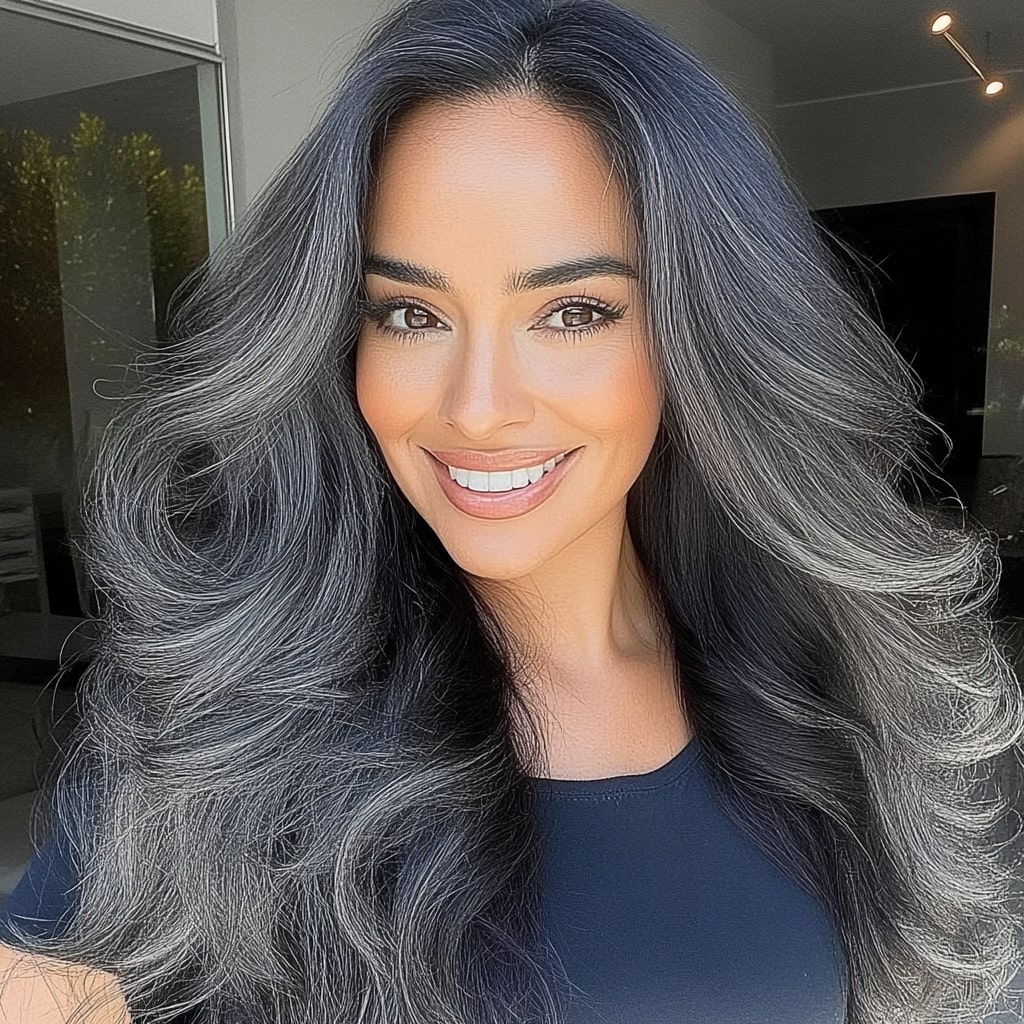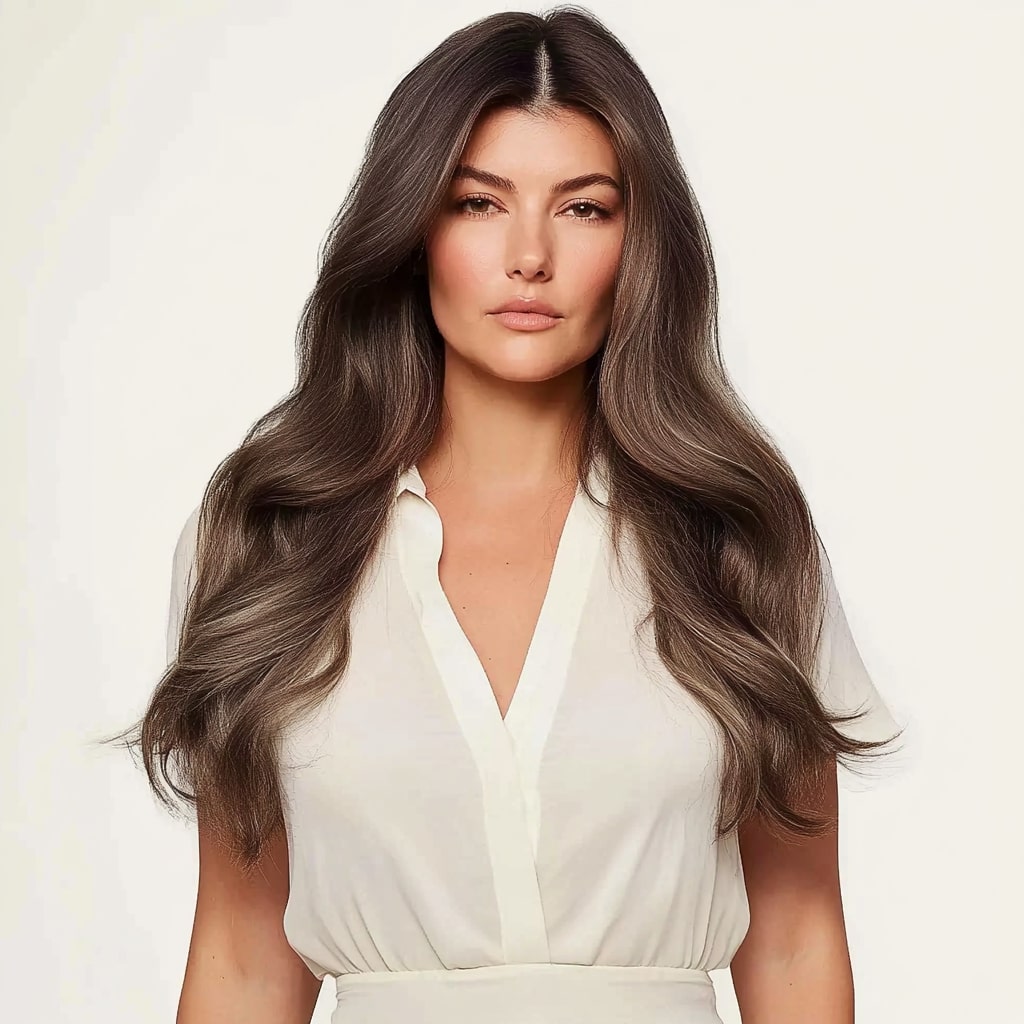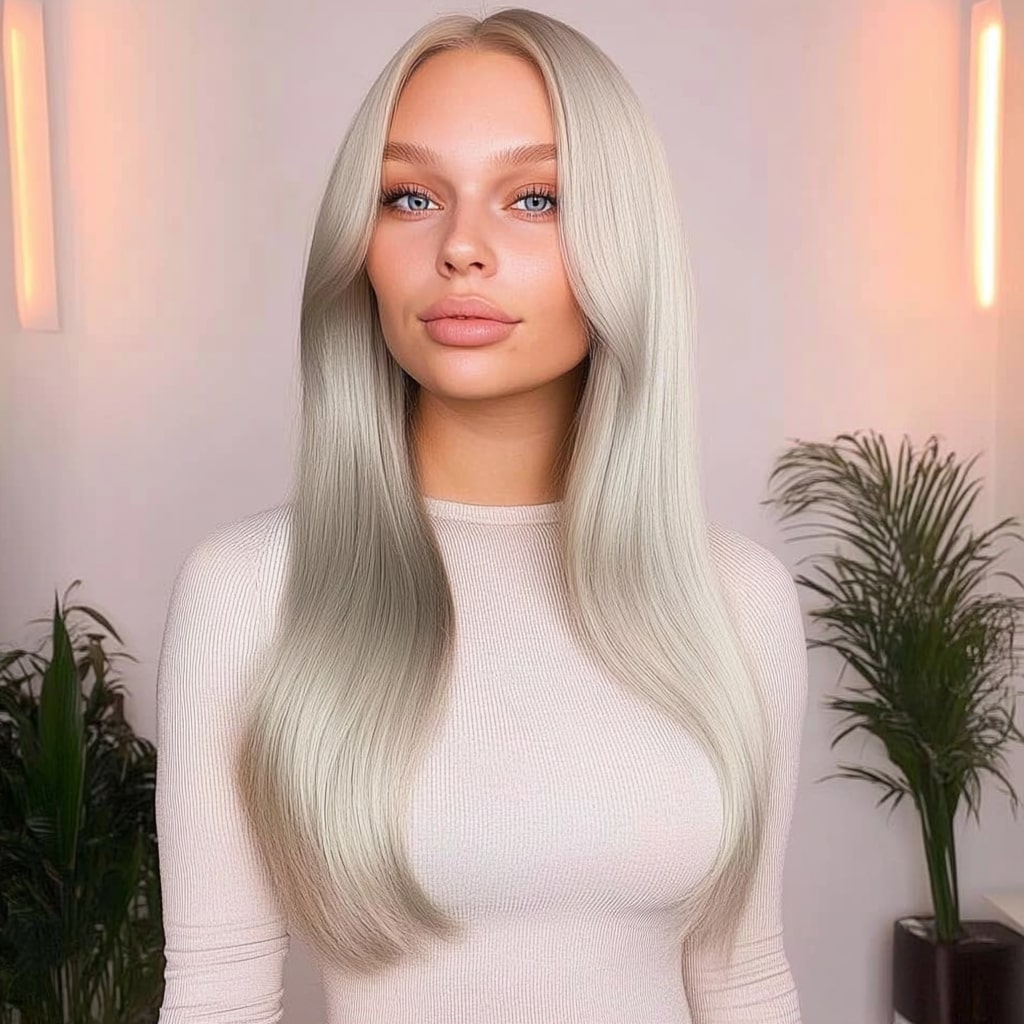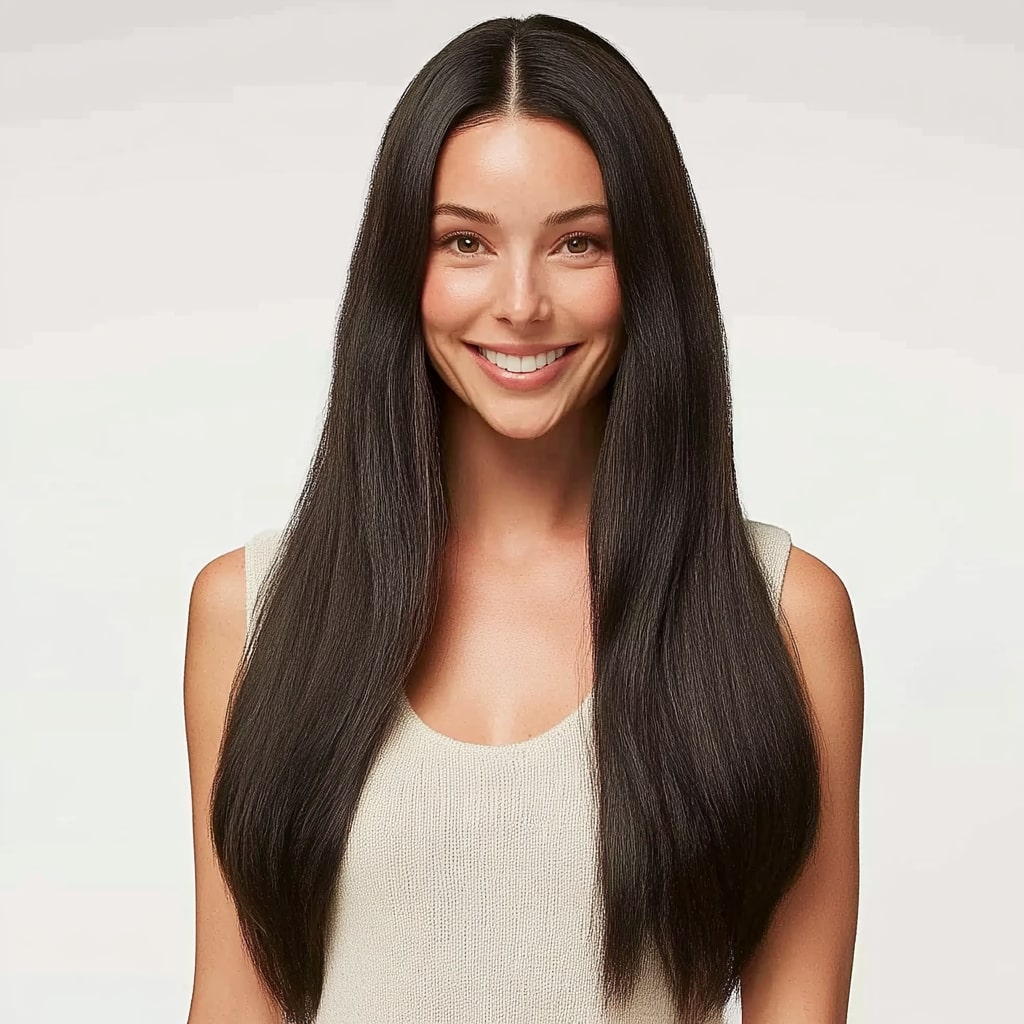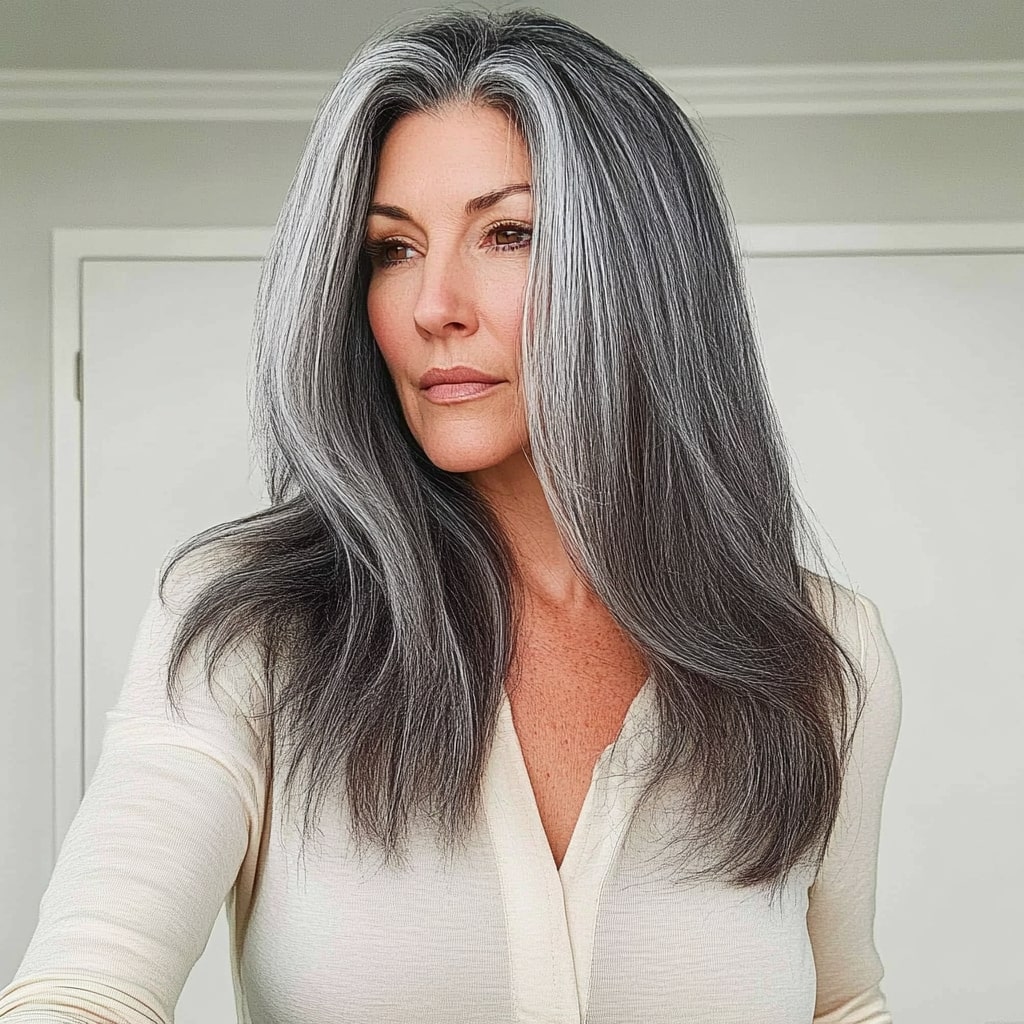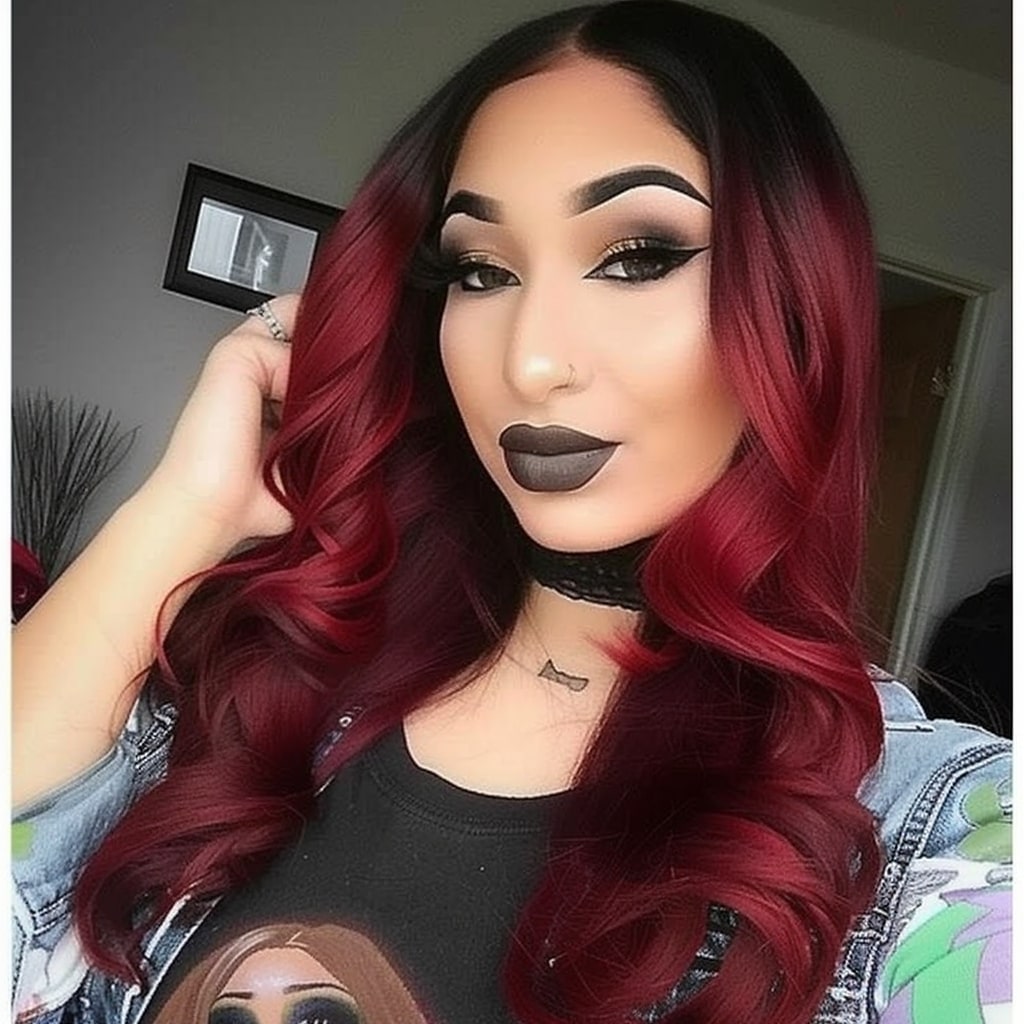Why Are My Hair Extensions Not Holding a Curl: Common Causes and Solutions
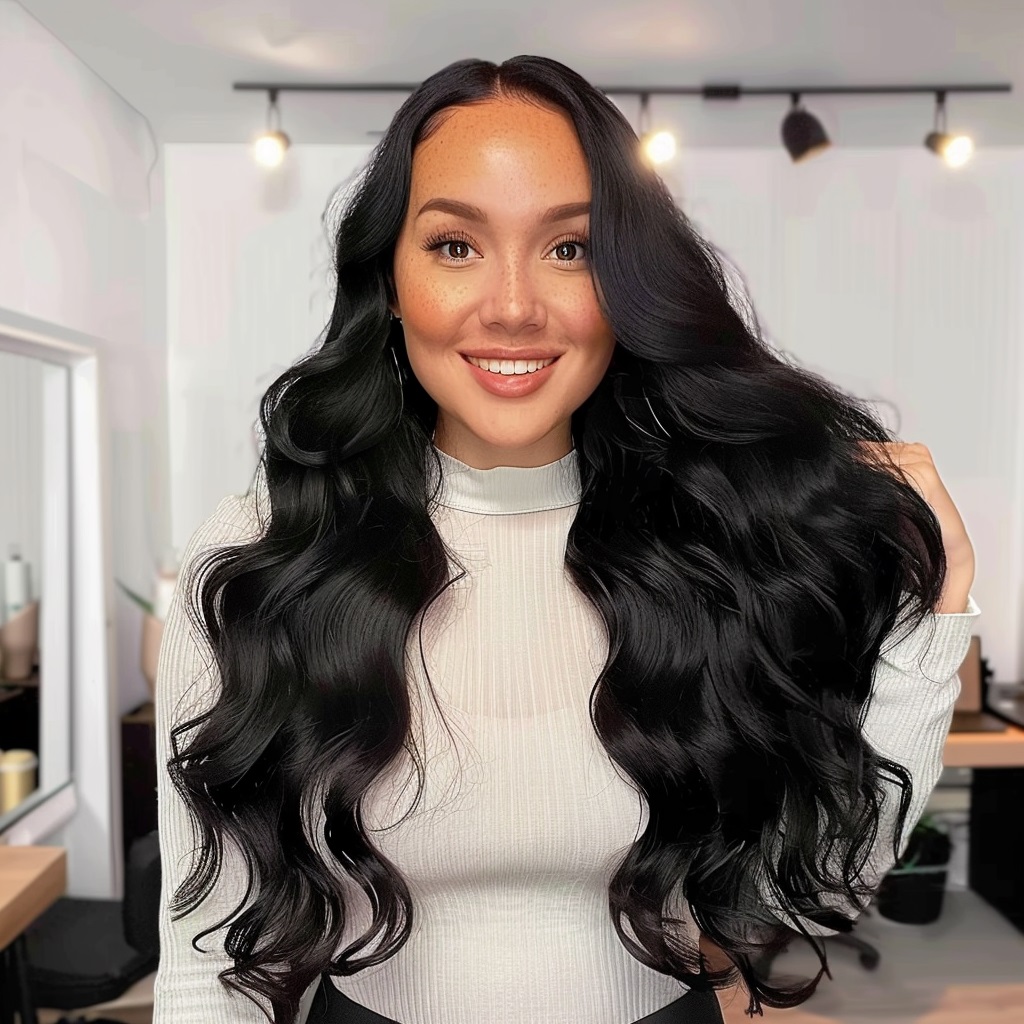
Ever tried curling your hair extensions only to find them going limp within hours? The main reason your hair extensions aren't holding a curl could be due to the natural variation in the hair itself. Human hair extensions differ just like our own hair does. These extensions can have unique textures and characteristics that affect how they respond to styling.
Other factors include the products you're using and how you're preparing the hair. If there is leftover moisture, the curls may fall flat soon after styling. Additionally, using styling products not suited for extensions can build up residue, making it harder for curls to stay bouncy.
To improve the hold of curls in hair extensions, ensure they are completely dry before styling and avoid heavy products that weigh them down. Choosing the right curling techniques and maintaining the curls with proper aftercare will help keep your extensions looking fabulous for longer.
Key Takeaways
- Hair extensions' natural variation affects curl retention.
- Dry extensions thoroughly before curling them.
- Use proper curling techniques and aftercare for best results.
Understanding Hair Extensions
Hair extensions can differ in many ways, including their types, structure, and the origin of the hair. Knowing these differences can help in maintenance and styling.
Types of Hair Extensions
There are several types of hair extensions, and each has its unique characteristics. Clip-in extensions are temporary and easy to attach. Tape-in extensions involve adhesive and last several weeks. Sew-in extensions are woven into the natural hair, providing durability. Fusion and pre-bonded extensions use a special glue or keratin to attach them. Microlink extensions are clamped onto the natural hair strands.
Each type has its own maintenance needs and affects how well the hair holds a curl. For example, clip-in extensions might not hold a curl as well as sew-in extensions because they are not as secure.
Anatomy of Hair Extensions
Understanding the structure of hair extensions helps in knowing how to style them. Human hair extensions consist of the cuticle, cortex, and medulla. The cuticle is the outer layer and requires proper care to avoid damage. The cortex provides strength and color, and the medulla is the innermost layer.
Extensions that retain their cuticle layer will be smoother and shinier. Those lacking cuticles may tangle and not hold styles well. Keeping the cuticle intact is essential for maintaining curl and shine.
Role of Hair Donor and Texture
The origin and texture of the hair used in extensions significantly impact their performance. Extensions made from human hair tend to hold curls better than synthetic ones. Donor hair, especially from regions like India or Brazil, is often untreated and thus responds well to heat styling.
Different donors have varying hair textures. For instance, Chinese hair is coarser, which can affect how it holds a curl. It’s important to match the hair texture of the extensions to the natural hair for seamless blending and better styling results.
Proper care and understanding of these factors can help in maintaining and styling hair extensions effectively.
Preparations for Curling
Preparing hair extensions for curling involves starting with clean hair, selecting the appropriate styling products, and using a heat protectant to avoid damage.
Starting with Clean Hair
Clean hair is essential for achieving curls that last. Washing hair extensions with a clarifying shampoo helps to remove any build-up from products or oils that can weigh the hair down. Follow with a moisturizing conditioner to keep the hair hydrated and manageable.
Rinse the hair thoroughly to ensure no residue is left behind. After washing, allow the hair to air-dry or use a blow dryer on a low setting. This ensures the hair is completely dry, which is crucial for curling. Moisture in the hair can cause the curls to fall apart quickly.
Choosing the Right Styling Products
Selecting the proper styling products can make a big difference in how well the curls hold. For starters, using a texturizing spray or mousse can add volume and grip to the hair, making it easier for curls to stay in place.
Avoid products with heavy silicones as they can coat the hair and prevent it from curling effectively. A light-hold hairspray can be used to set the curls without making the hair feel stiff or sticky. Applying these products after the hair is dry but before curling can help achieve the best results.
The Importance of Heat Protectants
Using a heat protectant is crucial when curling hair extensions. Heat protectants form a barrier that shields the hair from the high temperatures of curling irons and other styling tools. This prevents heat damage, which can make the hair dry, frizzy, and prone to breakage.
Apply a generous amount of heat protectant evenly throughout the hair before using any heat styling tools. Make sure to choose a product that is suitable for the type of hair extensions you have, be it synthetic or human hair. This step not only protects the hair but also helps to keep the curls looking smooth and shiny.
Curling Techniques
Make sure to prepare your hair extensions properly before curling. This helps achieve lasting, beautiful curls.
Proper Sectioning for Effective Curls
Start by dividing the hair into small, manageable sections. Use hair clips to hold each section in place.
Sections should be about 1-2 inches thick. Smaller sections help the curls hold better and last longer.
Work on one section at a time, making sure to curl all the way to the roots. This technique ensures even heat distribution.
Selecting the Correct Barrel Size and Temperature
Barrel size matters. A smaller barrel, like 1 inch, is best for tighter curls. A larger barrel, such as 2 inches, creates loose waves.
Adjust the temperature based on the material of the extensions. Synthetic hair should not exceed 300°F. Human hair can tolerate higher temperatures, around 350-400°F.
Always use a curling iron that allows for temperature adjustment. This helps prevent heat damage.
Heat Setting and Curl Longevity
After curling, let the hair cool before touching it. Cooling helps set the curls and makes them last longer.
Spray your curls with a light-hold hairspray. Use products that don’t weigh down the hair.
Avoid brushing the curls immediately. Instead, gently separate them with your fingers. This keeps the shape and adds volume.
Properly maintaining your hair extensions and using the right techniques will result in curls that stay bouncy and beautiful.
Maintaining and Enhancing Curls
To ensure curls hold their shape and maintain lasting results, using the right products and methods is key. Different styling tools, products, and natural remedies can significantly improve curl retention.
Holding Products for Lasting Results
Holding products can greatly affect how well curls stay in place. Silicones in some products can create buildup, weighing down the curls. It's best to use shampoos and conditioners that do not have silicones, as they can coat the hair cuticle and prevent it from holding a curl.
Heat protectants are also essential when using curling irons or rods. They shield the hair from damage and can make curls last longer. Adding these products to your routine can help achieve fuller, longer-lasting curls.
Mousse, Hairspray, and Texture Sprays
Using products like mousse, hairspray, and texture sprays can significantly enhance curl retention. Mousse adds volume and provides a good base for curling. Applying it to damp hair before styling can create a fuller look and stronger hold.
Hairspray is useful for setting curls after styling. A medium-hold hairspray can keep curls flexible while holding their shape. For extra texture and grip, a texture spray can be applied to dry hair before curling. This gives hair a rougher feel, making it easier for the curls to hold.
Natural Remedies for Curl Enhancement
Natural remedies can also help in maintaining and enhancing curls. Coconut oil is effective for adding moisture and shine. Applying a small amount to the ends of your hair can prevent frizz and help curls hold their shape.
Another natural option is using a salt spray. Mixing sea salt with water and a little oil creates a natural texturizer that can help curls stay in place. Applying this to damp hair before styling can mimic the effect of beach waves and improve overall curl retention.
Incorporating these methods and products into hair care routines can make a significant difference in the durability and appearance of curls for hair extensions.
Troubleshooting Common Issues
When hair extensions aren't holding a curl, several factors could be at play including damage, hair texture, and external influences like weather.
Addressing Hair Extension Damage
Hair extensions can sustain damage from heat and chemical treatments. Damaged extensions lose moisture, making them less pliable and less likely to hold curls. People should avoid frequent heat styling and use heat protectant products to shield the hair.
Regular conditioning treatments are crucial. Deep conditioning masks can help restore hydration. Avoiding products with sulfates and alcohol also helps maintain moisture. For severely damaged extensions, trimming the ends can eliminate split ends and help curls last longer.
When curls still won't hold, it’s often due to dryness. Ensuring the extensions are well-moisturized will improve curl retention.
Improving Curl Hold on Different Hair Types
Different hair types require different techniques. For fine hair, a lower heat setting prevents damage. Using a volumizing mousse gives extra grip, helping curls stay in place. Thin hair benefits from the light hold of styling products without getting weighed down.
Thick hair or coarse hair often needs higher temperatures to form curls but the higher heat can cause damage. Using a strong hold mousse or gel helps. For those with curly hair, defining natural curls with a curl-enhancing cream before using a curling iron may provide better results.
Proper product selection tailored to the hair type and texture is key to retaining curls.
Adjusting to External Factors
External factors like weather and humidity play a significant role in whether hair extensions hold a curl. Humidity can relax curls, so using anti-humidity sprays can be beneficial. Weather conditions also require using the right products; for instance, a stronger hold hairspray on humid days.
People may need to adjust their styling techniques based on the environment. Using a setting spray after curling can help maintain the shape. Reducing the frequency of washing extensions and keeping them clean from oily residues also ensures better styling outcomes.
Environmental adaptation helps curls withstand external influences, keeping them intact longer.
Aftercare and Tips for Prolonged Style
Proper aftercare can make your hair extensions hold curls longer and look more natural. Here are three key steps you should take to ensure your curls stay intact, maintain volume, and keep that perfect hair look.
Cooling Down to Set the Curl
After curling hair extensions, it's essential to let the curls cool down completely. Heat sets the curl, but cooling locks it in place.
Hold each curl in your hand or clip it up right after curling. Allow them to cool for at least 10 minutes. This method helps the curls last much longer throughout the day, giving a more natural look.
Avoid brushing while the curls are hot. Doing so can cause them to fall flat quickly. Use your fingers to separate the curls gently after they cool down for added volume.
Day-to-Day Care to Preserve Curls
Dry shampoo is your best friend for keeping your hair extensions looking fresh without washing them often. Washing too frequently can make curls loosen faster. Aim to wash your extensions no more than twice a week.
Separate the bonds daily to prevent tangles. Before bed, wrap your hair in a silk scarf or use a silk pillowcase. This keeps the curls from frizzing and helps maintain the style.
When using a blow dryer, always use a low heat setting, focusing on the roots and bonds. Excessive heat can damage extensions and ruin curls.
Using Rollers for Wet Sets
Wet setting with rollers can be a great heat-free option to make your hair extensions hold curls. After washing, gently towel-dry your hair and apply a small amount of curl-enhancing mousse.
Divide your hair into small sections and roll each one with a roller. Allow your hair to air-dry or use a blow dryer on a low setting if needed. Once dry, unroll and lightly finger-comb through the curls to maintain volume.
Using rollers helps achieve long-lasting curls without exposing the hair to unnecessary heat, keeping the extensions healthier and more resilient.
By following these steps, your hair extensions can hold curls better, stay voluminous, and look fabulous for longer.
Frequently Asked Questions
There are several reasons why hair extensions might not hold a curl. Key factors include the type of hair, the curling technique used, and the products applied before and after styling.
How can I get my hair extensions to hold a curl more effectively?
Using the right products is crucial. Avoid shampoos and conditioners with silicones, as they can weigh hair down. After curling, pin the curls up to cool. This helps set the curls in place.
What techniques should I use to curl my human hair extensions?
Section your hair properly before curling. Use a curling iron with a consistent temperature. Hold each curl until it’s warm, then pin it up to cool. Always let the curls cool down completely before styling further.
What could be the reason my curls fall flat after curling?
The most common reasons are product buildup or improper cooling. Products with wax or silicone can make hair slippery. Not allowing hair to cool properly will also prevent curls from setting.
Can you curl synthetic hair extensions and if so, how?
Yes, you can curl synthetic hair extensions, but you must use low heat. Some synthetic fibers can be curled with steam or hot water. Always check the product instructions before applying heat.
How do I prevent my hair from going straight after curling it?
Ensure your hair is completely dry before curling. Use a setting spray or mousse designed for holding curls. Pinning each curl and allowing it to cool is essential for maintaining the curl shape.
What should I do when my hair extensions won't curl at all?
If your extensions won't curl, check if they are made from genuine human hair. Some low-quality extensions or those with heavy silicone coatings might not curl effectively. You may need to clarify the hair with a shampoo designed to remove buildup.

 My Store Credit
My Store Credit
 Buy Again
Buy Again
